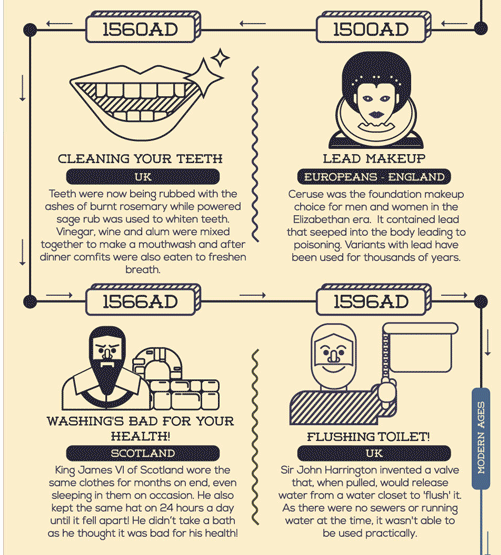From Ancient Egypt To Modernity, The Complete History Of Hygiene

We may look back on the past as a simpler time, but if there is one thing we’ve always criticized our ancestors for, it’s their lack of hygiene. True, they did not have our modern sewage systems or our understanding of human health in relation to cleanliness, but that doesn’t mean humans of the past didn’t try to stay clean and sparkling.
For example, UK-based PlumbWorld, an online retailer of bathrooms and bathroom/kitchen products, found Egyptian women liked their make up: At around 4,000 BC, they would apply galena mesdemet (made of copper and lead ore) and malachite (carbonite mineral) to their faces for added color and definition. And we all know that the Romans were pretty advanced when it came to city building. Though primitive compared to our current piping system, Rome did have pipes that distributed water throughout the city, mostly made from lead and elm trunks. These hollowed-out trunks are considered to be the earliest sewer disposal method.
Fast forward to the early 18th century and dentists, who also doubled at the time as barbers, were starting to make advancements toward oral hygiene, using dentures and gold crowns for the first time. This was shortly after Scotland started to recommend people scrub their teeth each morning with a sponge and warm water, PlumbWorld explained. Dentists today still can't decide if there's a brushing method better than this, but they agree you do need to brush your teeth for a healthy-looking smile,
To find out more about how the people of the past stayed clean and beautiful, check out the entire infographic below — your view of the stinky past may just change.

We found this on the Plumbworld blog: The History of Hygiene”



























